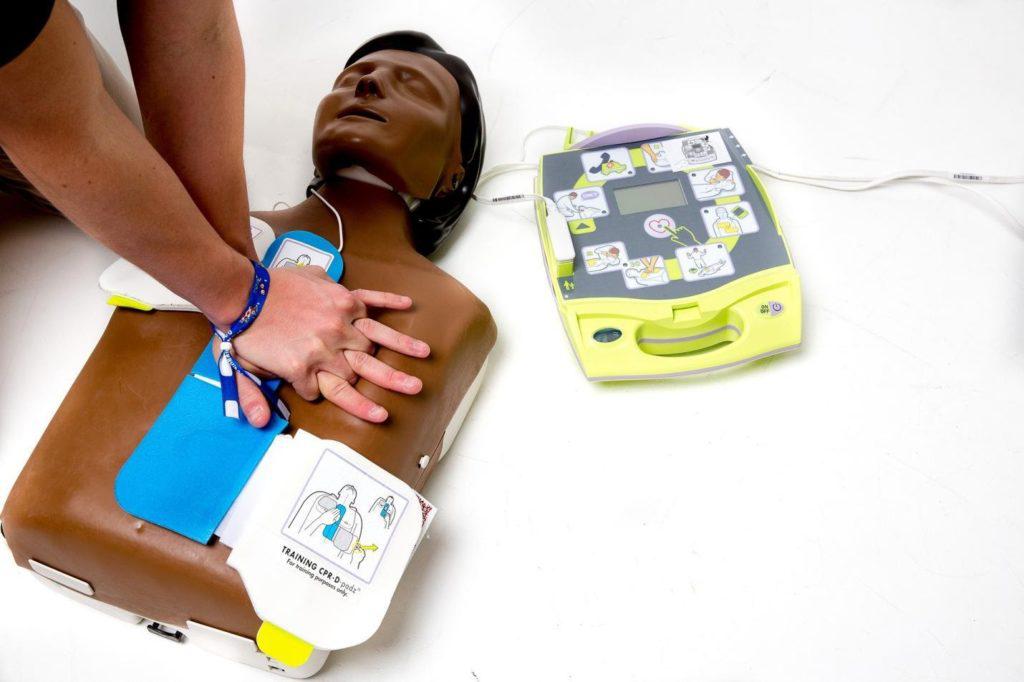
Performing CPR can make all the difference in life and death situations. The importance of acquiring such skills cannot be overstated. Cardiopulmonary resuscitation commonly referred to as CPR is a technique used to keep patients of specific medical emergencies alive until professional help arrives at the scene. You can acquire the skills through face to face training in BLS, and you will be able to help victims during a medical emergency. The main objective of performing CPR is to prevent brain damage by ensuring that the blood continues to flow smoothly. It also helps by ensuring oxygenated flows in and out of the lungs as well as through their entire body.
Abrupt Cardiac Arrest
Abrupt cardiac arrest is often confused with a heart attack even though they are not the same. During your face to face training in BLS, you will learn the difference in detail, but here is a layman’s explanation. Abrupt cardiac arrest is often the result of the heart-stopping suddenly from pumping blood. This usually occurs when regular heart impulses stop functioning normally. Heart attack, on the other hand, is often the last stage of heart disease. The disease causes the heart to pump blood slowly, and eventually, it stops from pumping blood to the heart muscle.
Survival for Abrupt Cardiac Arrest
Circulation of oxygenated blood is necessary for the normal functioning of body tissues. If oxygenated blood is not supplied in the body, major organs in the body may stop functioning properly. One such major organ is the brain. If the brain is not supplied with oxygenated blood within 4 to 5 minutes, it may sustain temporary damages. The damage can become permanent if the issue is prolonged for more than 7 minutes. CPR should be performed within the first 6 minutes of the sudden cardiac arrest if the victim is to survive permanent brain damage. However, it is normal for the patient to survive for a more extended period in certain conditions such as hypothermia, near-drowning experiences, and exposure to top extreme cold.
Cardiac arrest has become common in recent days as it is estimated that between 50 – 100 people in every 1,00,000 people are affected. Furthermore, the survival rate is very low, estimated at between 1% to 6%. The 6% is for people who have received a CPR, and the percentage continues to drop to 2% if you wait until the ambulance arrives.
Recognizing Symptoms of a Cardiac Arrest
The best way to help a cardiac arrest patient is by starting CPR as soon as possible. However, you can’t be able to start the CPR if you are not aware of whether the victim is going through cardiac arrest or not. If you witness a person collapsing or being unresponsive, then follow the steps below:
- Assess your environment to ensure it is safe to approach the patient
- Confirm if the person is unresponsive by tapping them on the shoulder and shouting their name out loud if you know them. If you don’t know their name, then you can confirm if they are unresponsive by asking if they are okay.
- If you don’t get any response, it is a sign of trouble. It would help if you started chest compression immediately.
- Don’t delay any further if there is no pulse for the first 10 seconds
How to Perform Chest Compressions?
It would be best if you started chest compression, whether you are a trained rescuer or not. Doctors have established that doing chest compression is vital compared to opening the airwaves through rescue breathing. You need to:
- Follow the basic guidelines
- Push hard and fast in the middle of the heart
- Compress the chest with a minimum of 2 inches for every downstroke
- Compressions should be done at the rate of 100 compressions every minute
- Reduce the frequency and time of distraction with every compression
- Only trained professional rescuers are allowed to perform chest compressions with ventilation
Common Complications
It is not unusual for complications to arise when performing chest compressions. Complications are unfortunate, but they can be inevitable. They include internal bleeding to the chest, damage of the lungs, breakage of ribs, or the sternum or a bruise to the heart. Such complications can be managed easily and therefore, should not prevent you from performing the compressions. Some people do not require CPR to be performed on them by signing a document known as DNR (Do not resuscitate).
Essential Training
Most trainers prefer to teach chest compression-only CPR to conventional CPR. Both of them are beneficial to the patient, but one is easy to teach than the other. Most of these courses are now taught online, but some people prefer instructor based face to face courses, especially for skills such as clearing of the airway, among others. The benefit of instructor-based courses like CPR and first aid in Burlington Ontario is that they provide immediate feedback.They also improve the quality of the techniques acquired and the retention of such skills. Once you have undergone the training, you need to take a refresher course every 3 to 6 months.
Stay Connect with Get News 360
